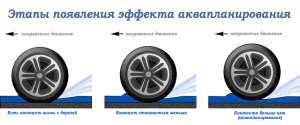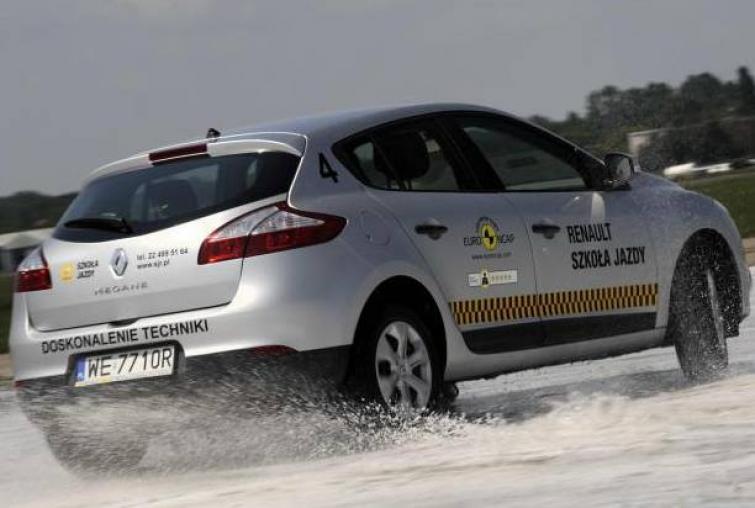
Aquaplaning - learn how to avoid slipping on wet roads
 Hydroplaning is a dangerous phenomenon that occurs on wet surfaces and has consequences similar to skidding on ice.
Hydroplaning is a dangerous phenomenon that occurs on wet surfaces and has consequences similar to skidding on ice.
A worn and under-inflated tire loses traction already at a speed of 50 km/h, a properly inflated tire loses traction when the car is moving at a speed of 70 km/h. However, the new "rubber" loses contact with the ground only at a speed of 100 km / h. When the tire is unable to drain excess water, it lifts off the road and loses traction, leaving the driver out of control.
This phenomenon is called hydroplaning, and three main factors influence its formation: the condition of the tires, including tread depth and pressure, the speed of movement, and the amount of water on the road. The first two are influenced by the driver, so the occurrence of a dangerous situation on the road largely depends on his behavior and care of the vehicle.
The editors recommend:
Driver's license. The driver will not lose the right to demerit points
How about OC and AC when selling a car?
Alfa Romeo Giulia Veloce in our test
See also: Seat Ibiza 1.0 TSI in our test
If the road surface is wet, the first step is to slow down and drive carefully, and take extra care when cornering. To prevent skidding, both braking and steering should be done carefully and as infrequently as possible, advises Zbigniew Veseli, director of the Renault driving school.
Symptoms of hydroplaning are a feeling of play in the steering wheel, which becomes much easier to control, and the “running” of the rear of the car to the sides. If we notice that our vehicle skidded while driving straight ahead, the first thing to do is to remain calm. You can’t brake hard or turn the steering wheel, safety driving coaches explain.
To slow down, take your foot off the gas pedal and wait for the car to slow down on its own. If braking is unavoidable and the vehicle is not equipped with ABS, perform this maneuver in a smooth and pulsating manner. Thus, we will reduce the risk of blocking the wheels - experts add.
When the car's rear wheels lock up, oversteer occurs. In this case, you should counteract the steering wheel and add a lot of gas so that the car does not turn around. However, do not apply the brakes, as this will exacerbate oversteer. If the skid occurs in a turn, we are dealing with understeer, i.e. loss of traction with the front wheels. To restore it, immediately take your foot off the gas and level the track.
To leave room for emergency maneuvering in the event of loss of traction, keep more than normal distance from other vehicles. In this way, we can also avoid a collision if it is a skid of another vehicle.
Experts advise what to do in case of skidding on a wet surface:
– do not use the brake, slow down, losing speed,
- do not make sudden movements with the steering wheel,
– if braking is unavoidable, in vehicles without ABS, maneuver smoothly, with pulsating braking,
– to prevent hydroplaning, regularly check the condition of the tires – tire pressure and tread depth,
– Drive slower and be more careful on wet roads.
